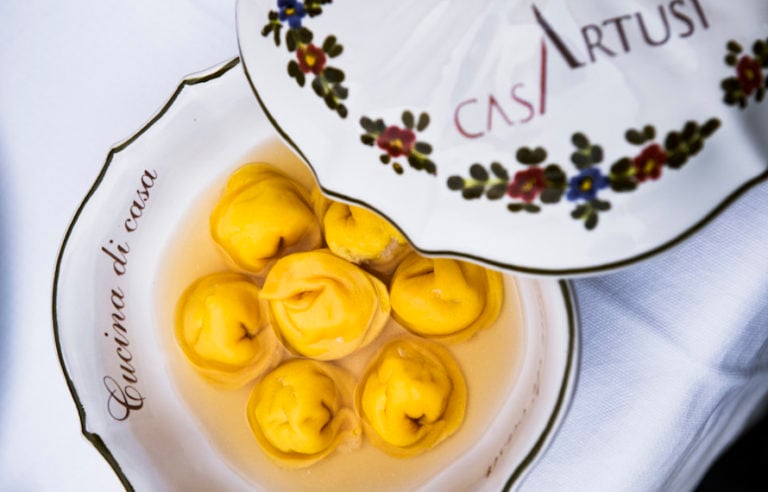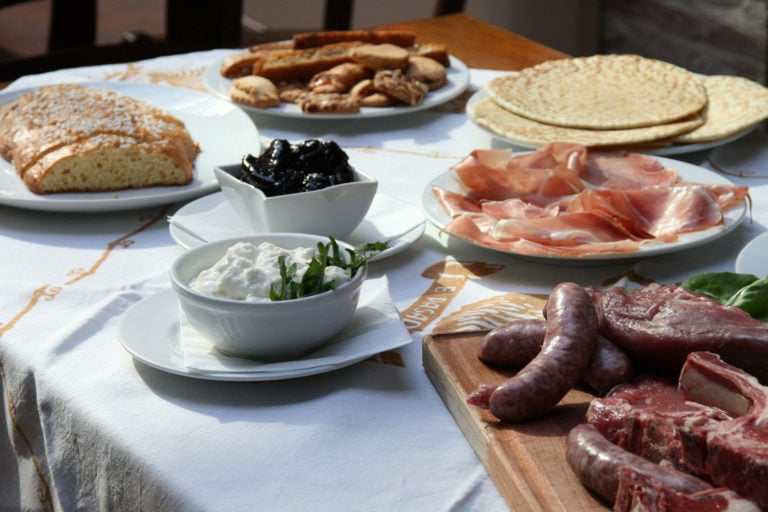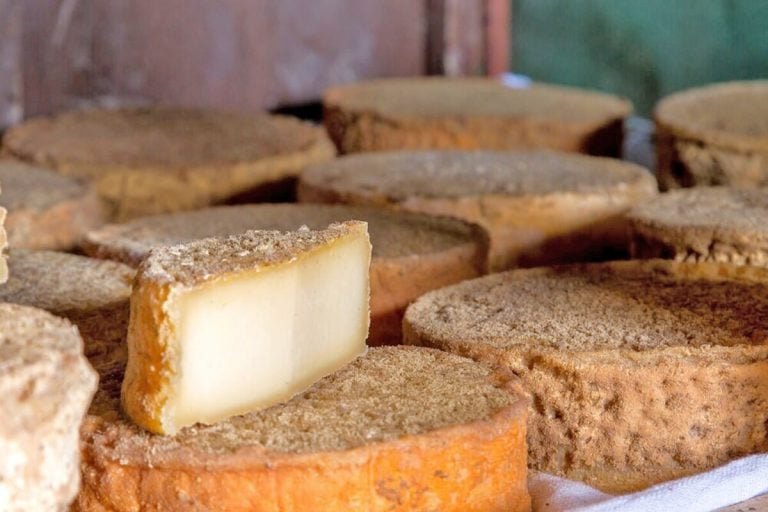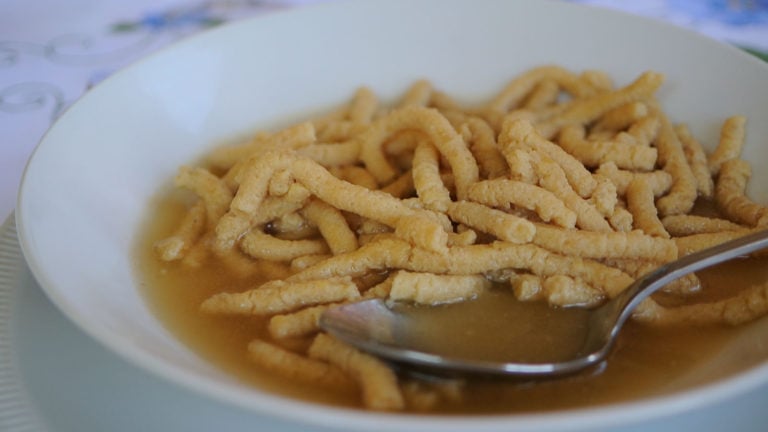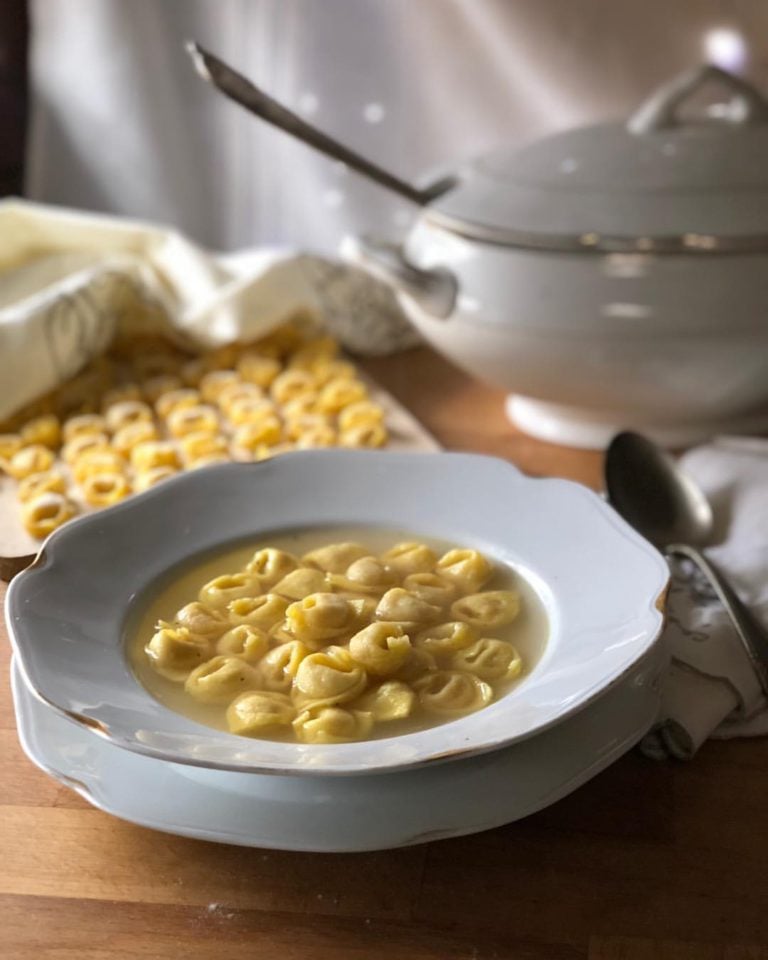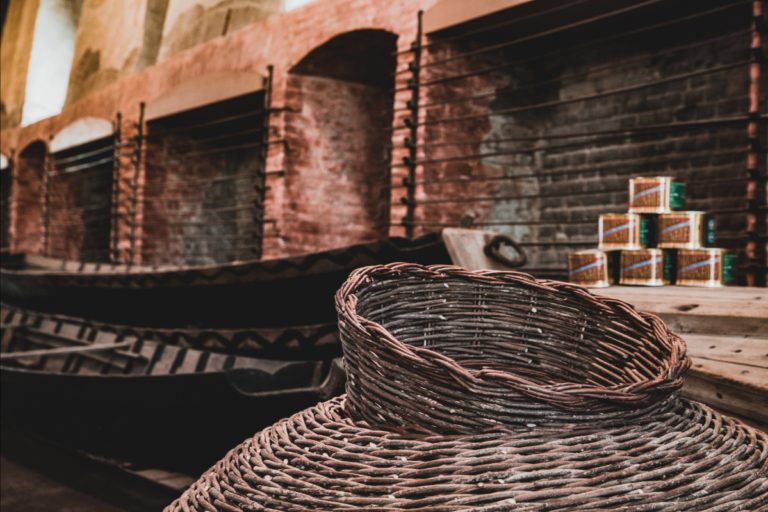Romagna food boasts loads of dishes and recipes with very ancient traditions. There’s one thing I’ve learned over time: in this world, pasta has no limits.
Here you eat ‘Minestra’ – another regional word for first courses. Whether at lunch or dinner, the cuisine procedure to make ‘sfoglia’, which is the flattened dough, is very precise; you just have to mingle together two very simple ingredients – eggs and flour.
Just like ‘the Love that moves the sun and the other stars’, the skilled hands of the housewives (the so-called ‘Azdore’), along with the ever more growing number of men dabbling in this art, knit the dough over and over again, helped by their unmissable chopping board and rolling pin.
It’s in this simplicity and hidden warmth that all the dishes and recipes are made, the milestones of Romagna cooking.
After writing about passatelli and cappelletti, I’m presenting you SPOJA LORDA today, one of the tastiest local homemade pastas, a specialty of Ravenna and, most of all, of the inland of Faenza.
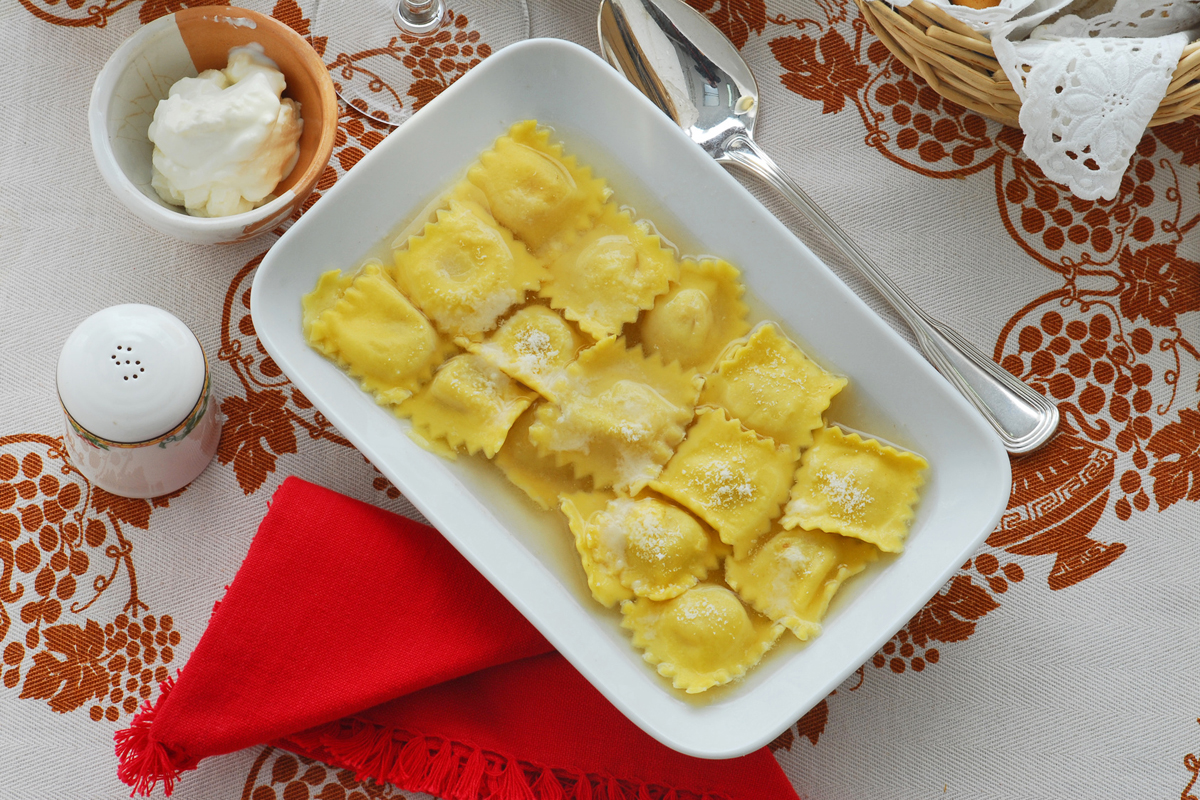
Prepared with simple ingredients, it presents itself as little squares (2 cm per side) with ragged edges of egg pasta filled with mixed types of ricotta cheese, eggs, Parmesan and a pinch of salt.
The regional term spoja lorda is also translated into the more Italian ‘filled pasta’.
This type of pasta was born along with another great dish of the tradition, cappelletti, although the former was not included in the great cooking book written by Pellegrino Artusi.
During the festivities, yesterday as today, tradition has it that great amounts of egg pasta were prepared all at once to please the gluttonous palates of relatives and friends alike.
On these occasions, the exceeding dough and filling were then recycled and frozen. Just by spreading a thin layer of filling on the remaining pasta (which gives the name ‘lorda’) and cutting it with the ‘speronella’—the typical pasta cutter with toothed wheels, you can get many tiny little dumplings to cook in the broth.
It’s a very easy recipe that can be served with a meat broth (of capon or hen), or with sauces, depending on tastes and availability. Hereunder the recipe.
Ingredients (serves 6 )
For the dough: 300g flour, 3 eggs
Per the filling: 200 g Raviggiolo cheese (if you cannot find Raviggiolo, you could use another kind of soft cheese, such as Robiola or mixed ricotta cheese); 100 g grated Parmesan cheese; 1 egg; 1 pinch of salt; 1 pinch of nutmeg. In addition, you can season the filling with some zest.
Method
For the dough: mix eggs and flour with a fork until everything is blended together. Once you’ve made your dough, knead and work it with your hands until you get a smooth lump of dough. Then, divide the dough into two portions. Roll both portions out with a rolling pin as thinly as possible.
Per the filling: put the Raviggiolo cheese, the Parmesan, the egg, adding a pinch of salt, nutmeg and the zest in a bowl and mix until obtaining a soft mixture. Put it in the fridge to rest (you can also prepare the filling a day earlier).
Spread the filling on the first pasta sheet and cover it with the second one, paying attention that the filling doesn’t spill over the pasta sheet. Using the pasta cutter, trim the pasta into evenly sized squares (1-2 cm). Lay them on little napkins dusted with flour.
Cook the little squares in a tasty meat broth. Your pasta will be ready when the squares begin to float to the top. Serve warm with a sprinkle of Parmesan on top. Buon Appetito!
Author

Davide Marino
Davide Marino was born archaeologist but ended up doing other things. Rational – but not methodic, slow – but passionate. A young enthusiast with grey hair
You may also like

Interested in our newsletter?
Every first of the month, an email (in Italian) with selected contents and upcoming events.
A Romagna’s remedy for the cold weather: passatelli in broth!
by Arturo Castellini /// November 15, 2019
History and recipe of the Tortellino, king of Christmas (and beyond)
by Elisa Mazzini /// December 4, 2019
